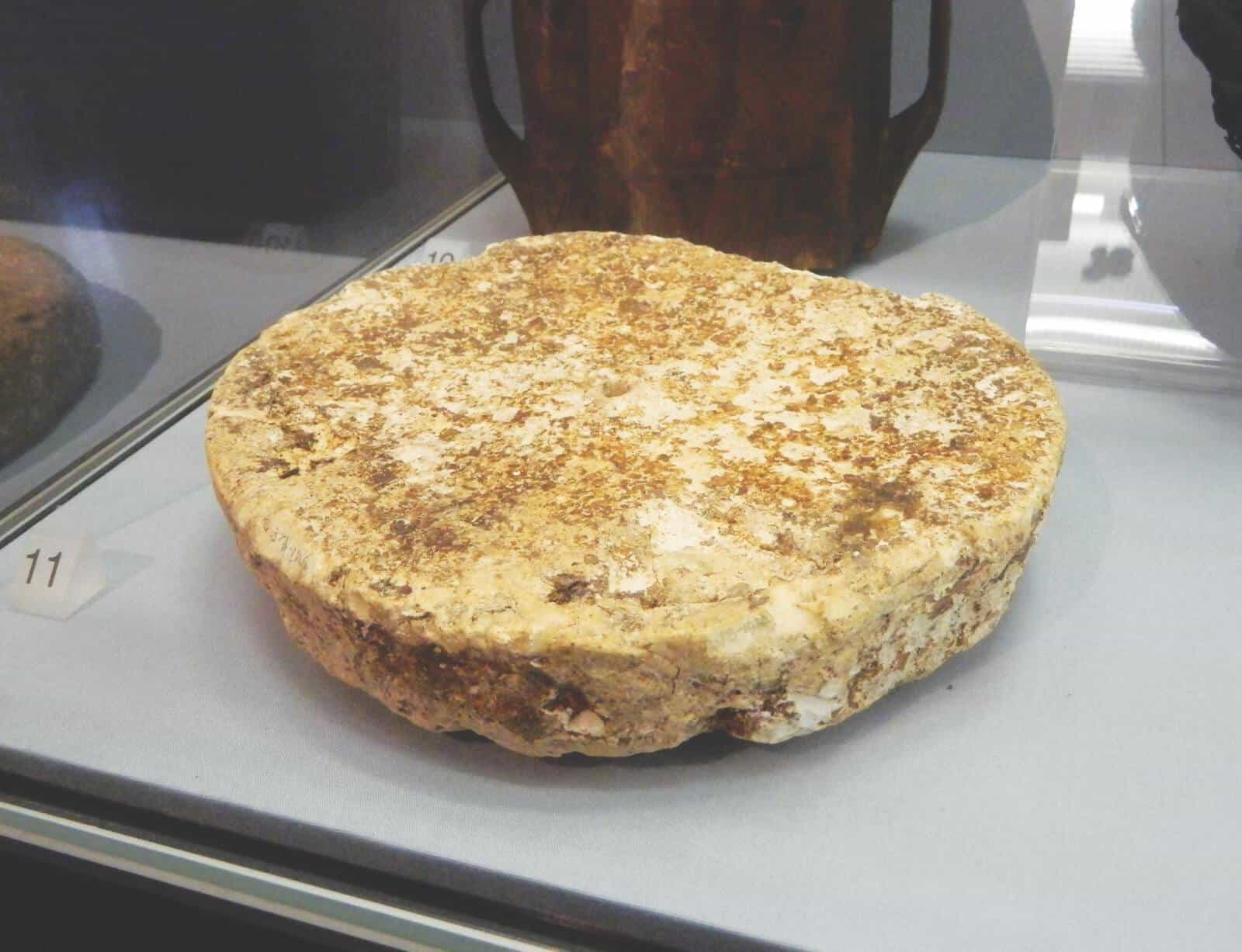
Bright, shiny objects in museums are sexy. You don’t need to read the placard posted on the display case of a golden chalice or necklace to know it’s important. Grimy, obscure objects, however, require some background to achieve significance in the eye of the beholder.
In spite of this bias, a rugged mass of holy-cow-what-is-that? caught my attention during a visit to the Cork Butter Museum in Ireland. The object on display was an enormous hunk of hardened butter in a carved, hollowed tree trunk, dug out of a peat bog after spending more than 1,000 years concealed in black turf. It was mottled gray, yellow, and green and crackled on top, looking more like a cask filled with broken fossils than a spread for toast.
Radiocarbon testing reveals that the practice of burying butter in peat bogs dates back more than 3,500 years, since around the same time the Babylonians were working out that thing we call arithmetic. The specimen I saw in Cork was buried around 1000 A.D., almost a century before William the Conqueror even set foot on British soil. But why did these Bronze and Iron Age residents of Ireland bury their butter?
Food burial is not unheard of: Morocco’s smen (a preserved butter), Scandinavia’s lutefisk and gravlax (aged fish), and Italy’s formaggio di fossa cheese are but a few of the edibles traditionally committed to the ground for processing, storage, and safekeeping. Peat bogs are particularly helpful in this regard; they’re cool, anaerobic, and highly acidic, providing the perfect environment for stashing food. It’s Mother Nature’s own fridge—just without the magnets and children’s artwork on the door.
The Irish have long relied on dairy for survival. Bàn bídh, or “white meats,” historically included not only milk, but butter, curds, cheese, and cream. Except in rare instances, the Irish didn’t slaughter cattle for meat. Butter was a vital source of nutrients that helped see households through the lean season until the next harvest. Kill the cow and you put an end to your white meat supply. Because butter was crucial to survival, historians speculate it was also buried to protect it from pilferage by anyone from local ne’er-do-wells to invading armies.
Perhaps flavor was a consideration as well. Evidence suggests that fermentation occurs when butter is enclosed in peat, rendering it both more nutritious and more palatable. And as the 17th-century poem, “The Irish Hudibras,” reads: “Butter to eat with their hog, was seven years buried in a bog.” Since peated scotch gets my vote for one of the tastiest comestibles ever, maybe I shouldn’t turn up my nose at peated butter.
I met a man who’d eaten a sandwich made with bog butter that a friend had dug up while cutting peat. He said it tasted pretty much like you’d expect butter to taste. Other brave souls from modern times have sampled it and described it in less flattering terms: “pungent,” “funky,” “putrid,” and more. An experiment in Sweden showed that buried butter kept well, and at three months was superior to butter kept in a refrigerator, which had gone rancid after the same amount of time.
Beyond sustenance, butter was to the Iron Age residents of Ireland as salt was to the ancient Romans: currency as well as food. Seventh- and eighth-century Irish law texts detail measurements for butter used as food-rent on fiefs, paid to the landowner. One speaks of payment of a bullock plus an amount of butter “two fists in length and one fist in thickness.” Some also speculate a ritual motive, that butter was buried to appease the gods and encourage a good flow of milk in the upcoming dairying season.
Close to 500 caches of bog butter have been dug up in Ireland in the last couple of centuries, most packed into wooden vessels, as well as in bark, animal skins and bladders, wicker, and pottery. Yet over a span of 3,000-plus years, no one seems to have written down why they were stashing their butter in the neighborhood bog. We may never know the answer, but as scholarly research, news articles, and museum exhibits amply attest, the savings certainly accrue interest at the National Bank of Peat.




Thanks Deborah! This was some fun research, for sure.
Such an interesting article. I learned something new in every paragraph! Excellent writing too. Thank you Carol Penn-Romine!
Thank you Dianna. This type of research is such fun, and you never know just where it will take you!
Thanks Maria!
Now if I could just find a peat bog in my neighborhood to try this at home…
Thanks Heather!
Carol
This was an incredible piece – so interesting – I didn’t know! I always wonder why Irish butter is so good……could be a much deeper meaning than great cows! Thank you so much, more please! H
Great piece! Keep them coming Carol!
Keep the interesting and educational writing coming, Carol Penn-Romine! Loved this “deep” look at ancient butter keeping practices.